Ernesto José Fernández Arias
Your work explores the intersection of the human body and nature. What originally drew you to this theme?
My interest in the intersection between the human body and nature began to take shape about seven years ago, although now I understand it as something that had been silently forming since my first experiences of the world. I was born and raised in Havana, Cuba, a place where nature is not a distant landscape, but a constant, almost physical presence. The tropical environment in which I grew up, full of lush vegetation, warm humidity and vibrant colors, deeply shaped the way I perceive the world. From an early age, it was surrounded by trees, fruitful plants, changing light and the textures of the natural world. That environment taught me to look closely, to observe how living beings relate to each other, how everything is connected.
But the conscious articulation of this connection between the human body and nature began later, when he was completely immersed in the study of painting. At that time, I was amazed by Lucian Freud’s work. His way of approaching the human figure, his raw and visceral treatment of the flesh, fascinated me. There was something deeply honest in the way he painted bodies, without idealization, without filters, just the weight, the folds, the temperature of the skin represented through thick brushes. It made me want to understand the body as a painting theme, not only as anatomy, but as territory.
Then, one afternoon in the middle of a Cuban summer, something changed. I was in the backyard of my family home, picking fruit from a guava tree. I remember it vividly because it was one of those moments in which the worldly suddenly reveals something extraordinary. As I reached for the fruit, I noticed the bark of the tree: its surface was marked by subtle gradients of color: pinkbeige, warm reds, greenish grays and almost bluish tones. What caught my attention was how similar those tones were to human skin. Not only in color, but in texture, in its organic unpredictability. That bark felt like flesh, worn, alive, layered.
That visual echo stayed with me. I realized that the body and the tree were not so different. Both carry memory on their surfaces. Both grow, heal, adapt. Both can be read as maps. That was the beginning of what has since become a central axis of my work: exploring the body not as an entity separated from nature, but as something that belongs to it, reflects it and is shaped by it.
Over time, this idea expanded. I began to see the human body as a landscape, something to be navigated, explored and interpreted. I became more and more interested in how the skin, for example, could resemble the cortex, how the veins reflected the root systems, how the anatomical structures could evoke geological formations. My paintings are not anatomical studies in a scientific sense; rather, they are attempts to merge the sensory language of the body with that of the natural world.
In this process, color became essential. I began to experiment with the tones found in natural materials (earth, clay, stone, wood) and integrate them into my palette for the human figure. I wanted the flesh of my paintings to feel porous, vegetable, like something that could belong both to the forest floor and to the inside of a body. I often paint without clearly defined contours, letting the shapes dissolve to each other, imitating how in nature nothing is really separate. This ambiguity, the space between, is where I find the most meaning.
Looking back, I think that moment with the guava tree marked the beginning of a visual and philosophical journey. One that has led me to see painting not only as a means of representation, but as a way of understanding the self in relation to the living world. In my work, I try to create images that evoke that original feeling, that moment of silent recognition when you realize that the bark of a tree and your own skin speak the same language.
So, although the subject of body and nature may seem formal at first glance, for me it is also spiritual, emotional and intuitive. It’s about returning to something essential: to a stillness that allows us to see the connections that we often overlook. Through painting, I try to make those connections visible, slow down perception and offer a space where the viewer can also experience that sense of belonging: to the body, to the earth and everything else.
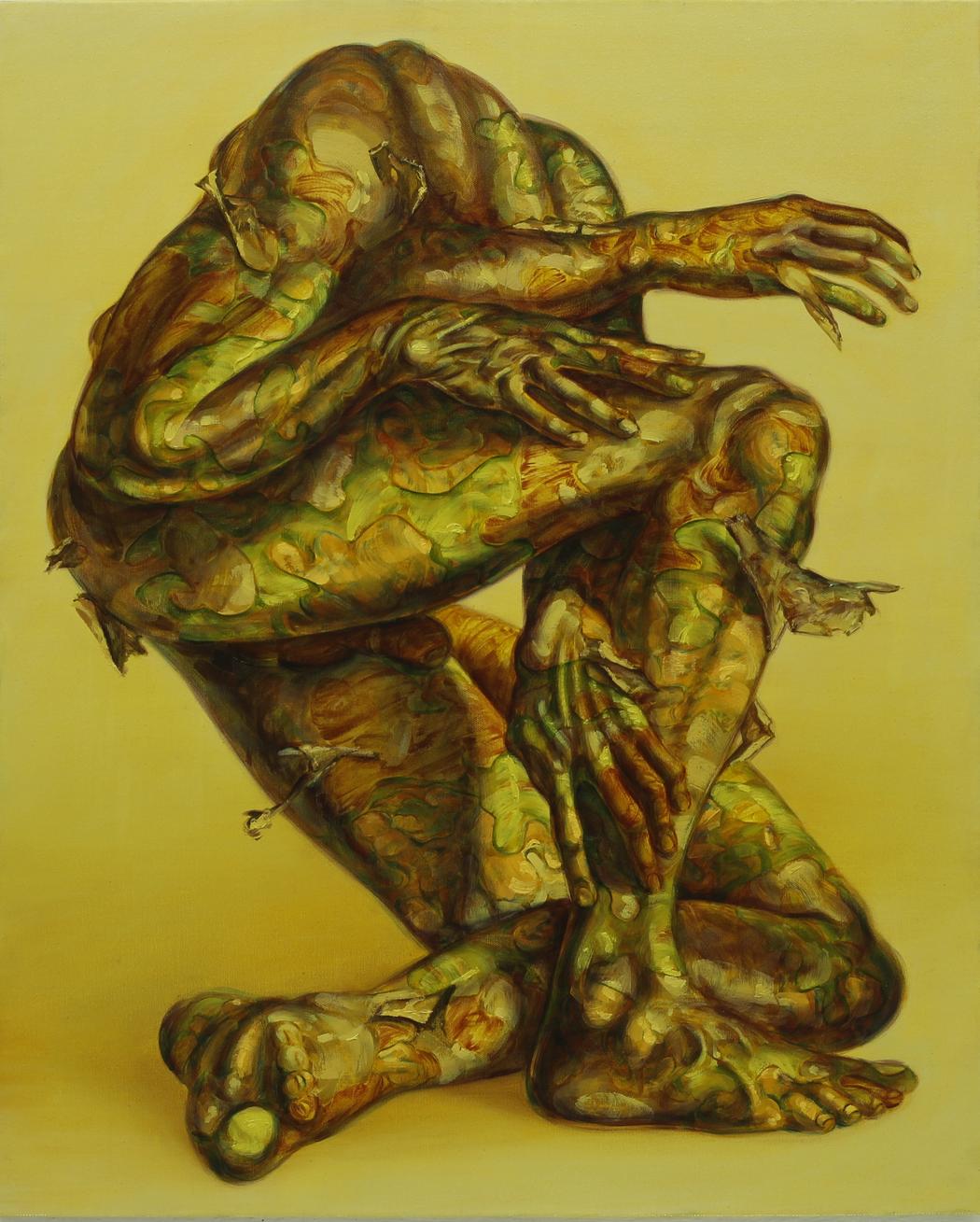 Ernesto José Fernández Arias | Yellow Shape
Ernesto José Fernández Arias | Yellow Shape
How has your training at San Alejandro influenced your artistic voice and visual language?
My training at the San Alejandro National Academy of Fine Arts was a key stage in the construction of my artistic identity. I entered when I was very young, just in the middle of adolescence, and that deeply marked the way I began to think about art. It was a period of discovery, of opening the eyes to a much wider universe than I had imagined until then.
San Alejandro is not only a school of painting: it is a space where multiple artistic languages are addressed. There I had the opportunity to explore engraving, sculpture, digital art, video art, performance, illustration… That range of media not only allowed me to develop technical skills in different disciplines, but, above all, to expand my creative thinking. I learned to look at art as a constantly expanding field, where the important thing is not the medium itself, but what you want to communicate through it.
Although I finally chose the path of painting, it was thanks to that formative diversity that I was able to consolidate a freer, intuitive and more experimental way of working. I understood that visual language is something that is built with time, with experience, with trial and error. San Alejandro gave me the tools to go through that process with depth and commitment, and above all he gave me an environment in which art is lived intensely, from the technical but also from the emotional and the collective.
Without a doubt, that stage gave me the foundations to understand that being an artist is not only knowing how to do, but also knowing how to think, feel and connect with your environment from a personal perspective.
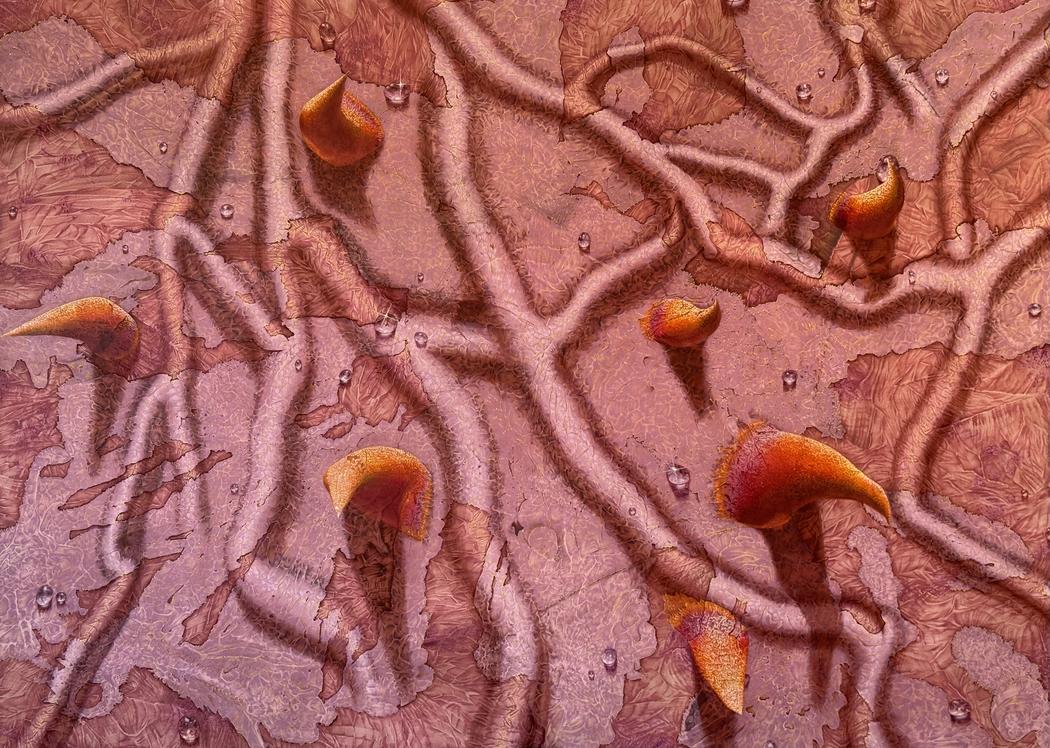 Ernesto José Fernández Arias | Veins And Thorns
Ernesto José Fernández Arias | Veins And Thorns
You often use anatomical forms fused with natural textures. Do these elements carry symbolic meanings for you?
Yes, definitely. In my work, both anatomical forms and natural textures not only function as formal or aesthetic resources, but are deeply loaded with symbolic meanings. I am interested in the human body as a territory where drives, emotions, bonds are manifested… and at the same time I am interested in nature as a living space that breathes, transforms, is fertilized and dies. Between both dimensions – the human and the plant – I find connections that are visual, but also symbolic, sensual, even spiritual.
One of the themes that my work goes through is that of sexuality and love, not from the explicit, but from a more intuitive and ambiguous sensitivity. In my hugs paintings, for example, there is an intention to represent the body in its most vulnerable and connected state: the gesture of the hug as a physical act, but also as a form of containment, fusion, desire. I am interested in representing the body not only as an object, but as an emotional subject, as an affective space where essential things of human experience occur.
Sexuality, fertility, desire, love, are themes that I find both in the body and in nature. It moves me to think about how a flower opens, how a fruit is born, how a root spreads, and how those images can dialogue with organs, folds, skin, veins. Sometimes those elements appear in my paintings directly, and other times they are more hidden, but they are always present in the way I build the pictorial matter.
I am also interested in the symbolic from the way in which the painting itself behaves: how the oil flows, how it mixes, how it creates textures that recall the wet, the living, what beats. There is a sensuality in the act of painting that is also transferred to the visual result. I like that my paintings can generate physical sensations in the viewer, that invite not only to look, but to feel. In that sense, the symbolic is not only in the content, but in the very experience of painting as a body.
On the other hand, I feel that both the human body and nature are spaces of creation, of origin. Both are fertile, both generate life. In them, processes occur that are beyond our control but that deeply shape us. Painting these connections is also, for me, a way of meditating on the link between the intimate and the universal, between the personal and the archetypal. Thus, the body and nature become languages that I use to talk about desire, love, birth, death, the constant transformation of all living things.
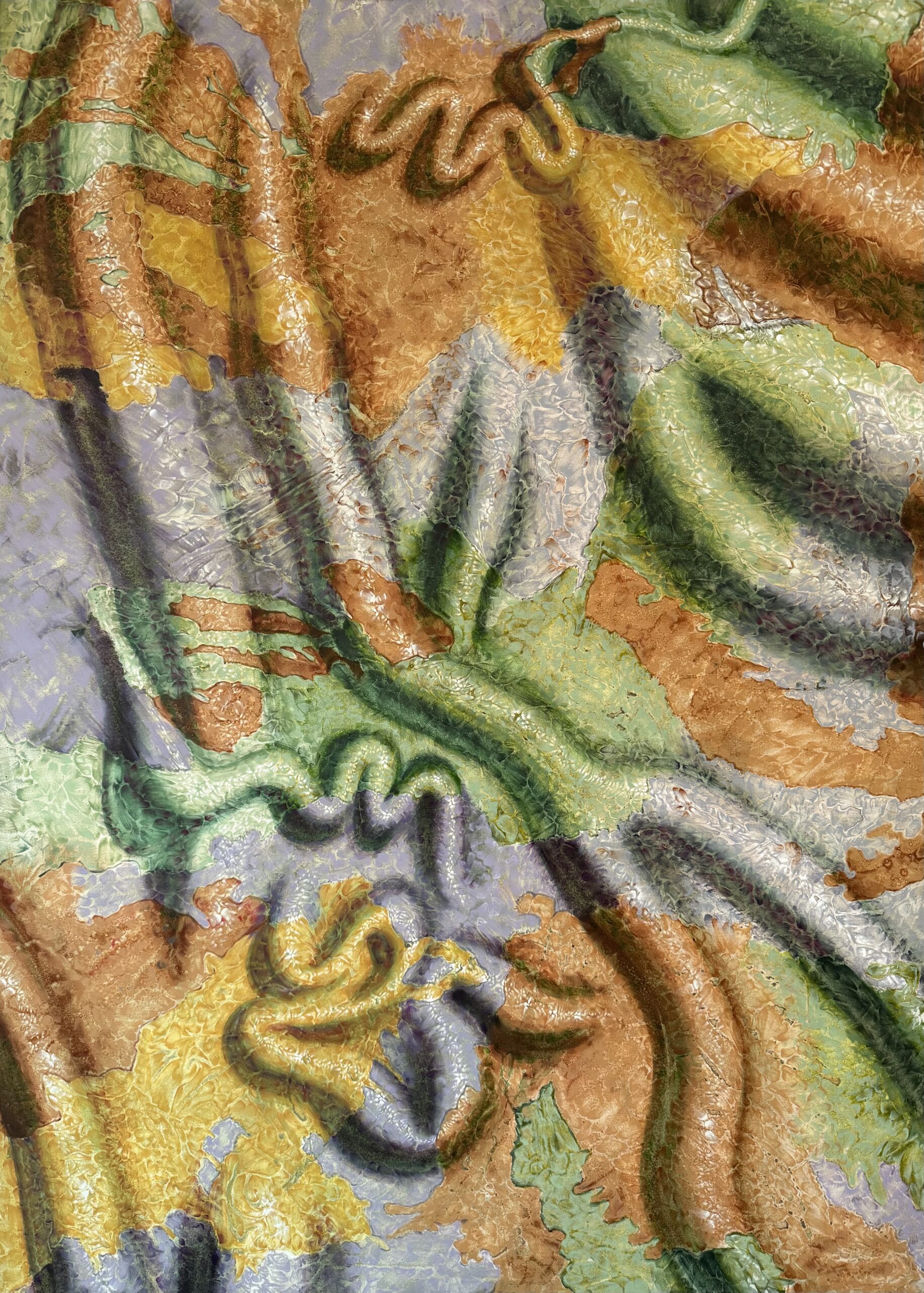 Ernesto José Fernández Arias | Veins and bones
Ernesto José Fernández Arias | Veins and bones
How do you approach the process of building your dense and tactile oil surfaces?
My process with oil painting is fundamentally based on layered work. For me, the construction of the image is not something immediate or spontaneous in the sense of a unique gesture, but it arises through a slow, cumulative development, almost like a growing organism. I am very interested in that slowness, that time that is needed for matter to find its shape, its thickness, its weight.
I understand oil as a deeply sensitive medium, which allows me to work with a plastic richness that manifests itself in the superposition. By painting by layers, I can control and at the same time discover what happens between one application and the next. That way of working allows me to achieve greater depth in the pictorial surface, and also capture with more fidelity and sensitivity the plant textures that fascinate me so much.
I am very inspired by the observation of barks, roots, lichens, organic structures that generate an almost tactile attraction. I do not seek to imitate them directly, but I do seek to translate their complexity, their visual and material density, into pictorial language. To achieve this, the layers allow me to model the shape from the inside, making the color not flat, but has body, volume and life. I work with glazing, fillings, transparencies and density contrasts, always trying to make the paint not only represent, but to embody.
There is also something important in the type of energy that this process requires. Painting like this forces me to be in constant dialogue with the work. Each layer is a decision, but also an opening to what may arise. Sometimes I completely cover an area that I had already worked on, other times I hint at what is underneath. That game between what is revealed and what is hidden is part of the construction of the visual language I seek.
The feeling of volume is essential for me. I’m not so interested in realism as in the physical presence of the image. I want the painting to feel alive, to have weight, to invite you to look closely, to stop. That materiality seems to me fundamental to reinforce the connection between the body and the plant, which is one of the main lines of my work. Just as a bark has layers that tell its story, my paintings also contain traces of the process, remains of time and the decisions that have given rise to the final image.
In short, painting in layers allows me to build a rich, complex and open surface. A surface that is not only looked at, but inhabited.
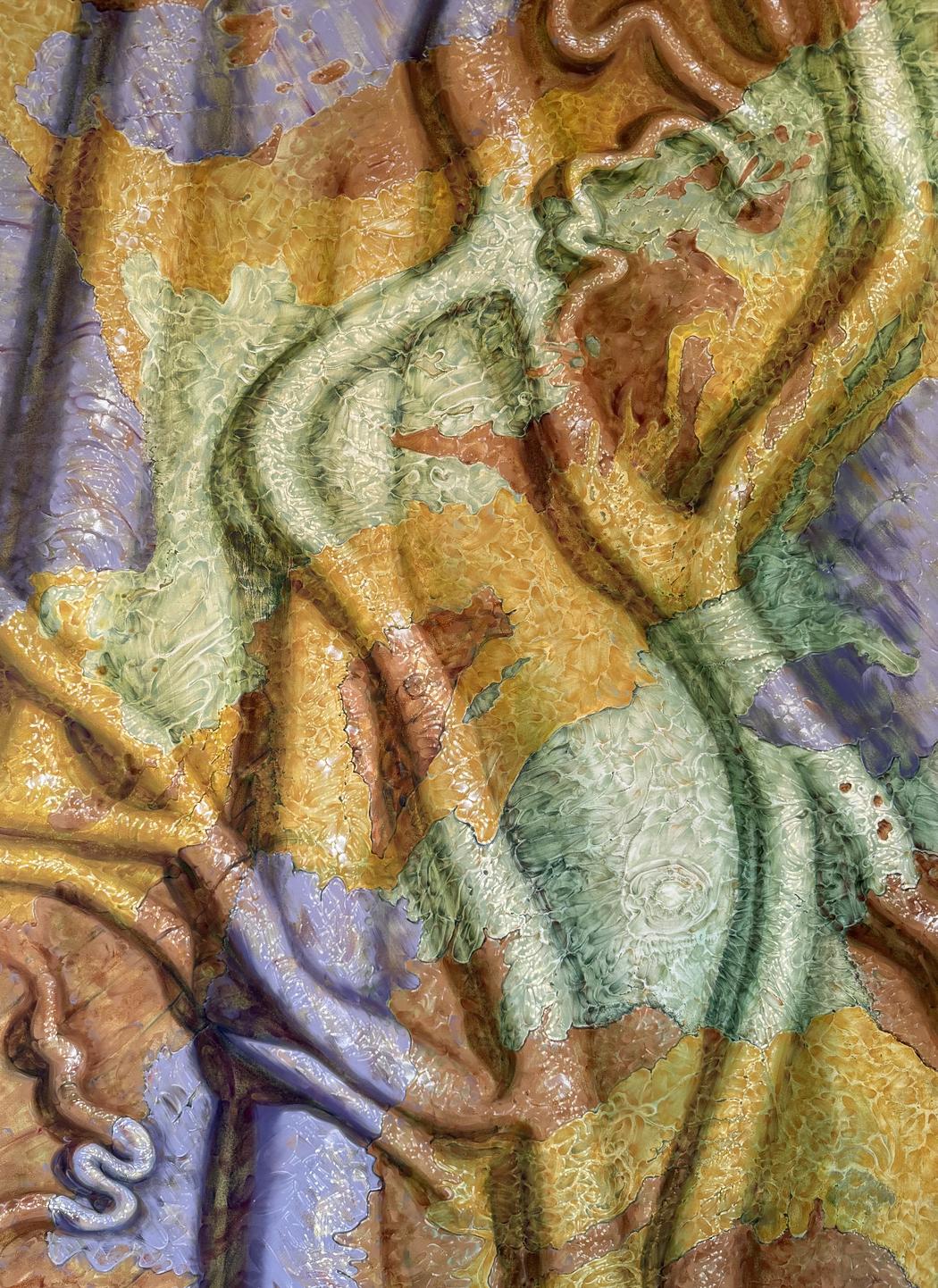 Ernesto José Fernández Arias | Veins And Bones
Ernesto José Fernández Arias | Veins And Bones
Your works evoke both sensuality and ambiguity. What emotions or reactions do you hope to awaken in the viewer?
What interests me most when creating a work is to generate a sensory and introspective experience in those who observe it. I do not seek for the viewer to understand something specific or reach a closed interpretation; quite the opposite: I aspire to open a space where he can feel invited to look carefully, to let himself be emotionally affected by what he sees, and, above all, to connect with his own inner universe.
The ambiguity in my works is not accidental, it is a resource that allows me to escape from the literal and let the image breathe. I’m interested in suggesting, not imposing. That the forms can be both skin and bark, both flesh and root. This lack of visual certainties can generate in the viewer a feeling of bewilderment at first, but also of attraction. I like to think that my works are located on that threshold between the recognizable and the indefinite, where perception becomes more active and more intimate.
As for sensuality, I think it is present not only in the content – the bodies, the hugs, the body textures – but also in the way I apply the painting, in the subject itself. The oil, with its density and fluidity, allows me to build surfaces that invite to be traveled with the gaze almost as if they were felt. That tactile dimension of the painting seems essential to me, because it links the viewer with the work from the body, not just from the mind.
In short, I am interested in causing a pause. That whoever approaches one of my works can remain silent for a moment, let himself be touched, and perhaps discover something that he did not know was inside him.
Do you see your work as part of a broader discourse about the relationship between humanity and the environment?
Yes, definitely. Although my work starts from an intimate exploration of the body and the sensory experience, I also understand it as part of a broader conversation about our relationship with the natural environment. I am interested in showing that the human body is not separated from nature, but is part of it, reflects it and continues it. By merging plant textures with body shapes, I try to break that division that we often establish between the human and the natural.
I believe that recovering that connection is essential, especially at a time when the link with the environment is in crisis. Through painting, I try to remember that we are living matter, that we share rhythms, weaknesses and cycles with everything that surrounds us. My works are not a direct denunciation or an ecological manifesto, but they do contain a look that seeks to awaken sensitivity towards the organic, the essential, the shared.
Painting bodies that merge with the earth, with the bark or with the roots, is also a way of imagining new ways of inhabiting the world. A world where humanity and environment are not in conflict, but in communion.
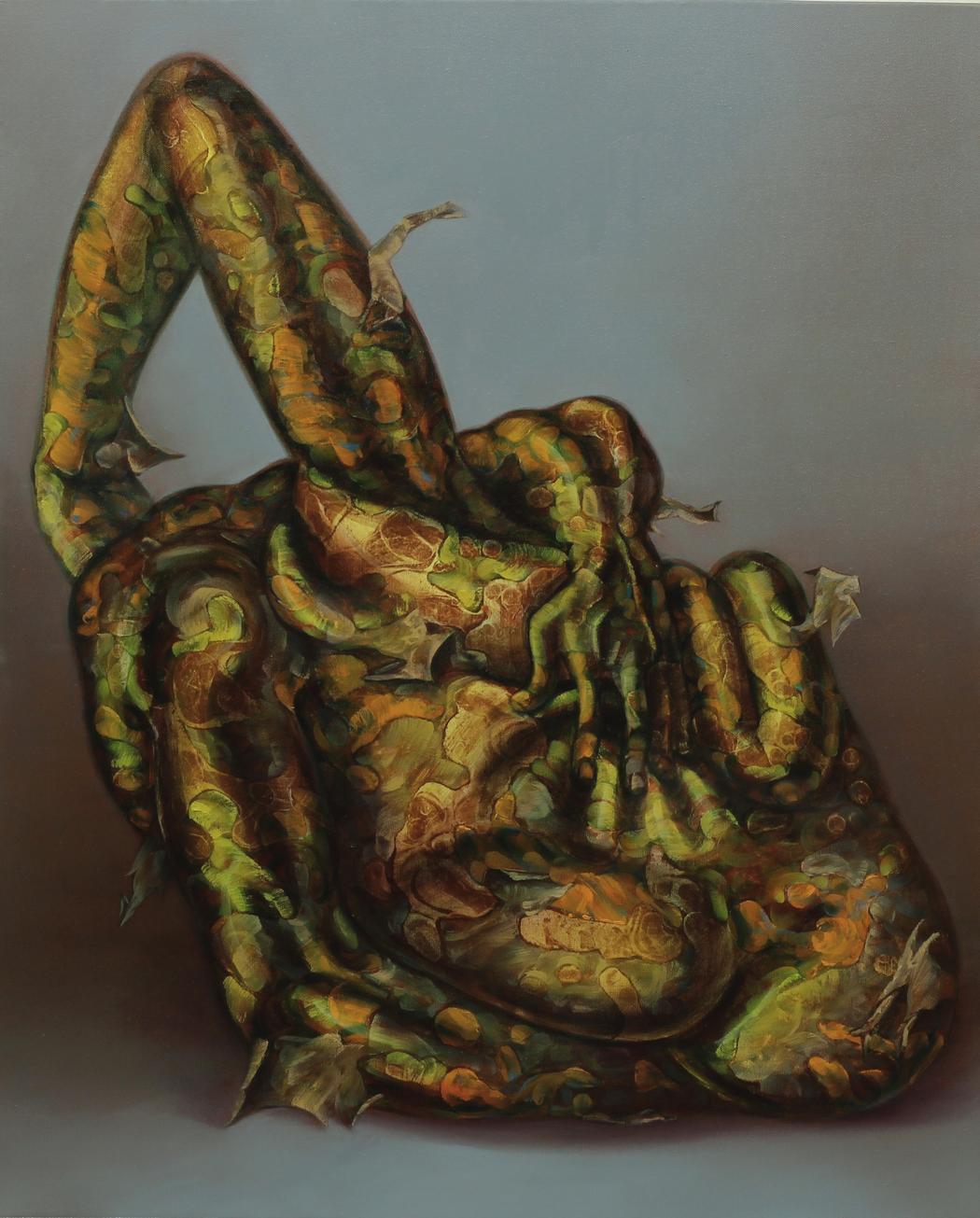 Ernesto José Fernández Arias | Heart Shape
Ernesto José Fernández Arias | Heart Shape
How has living in Andalusia influenced your creative process or subject matter?
My experience living in Andalusia, and more broadly in Spain – including stages in Madrid and the Balearic Islands – has been deeply transformative both on a personal and artistic level. Emigrating is undoubtedly a complex experience. It is a constant challenge: to adapt, to observe with new eyes, to rebuild one’s own place in the world. But it is also an invaluable opportunity to grow, broaden the look and enrich the thought.
Living in different places has allowed me to know different realities, understand other ways of inhabiting the body, the earth, time. I have discovered that the character of a place is expressed not only in its landscapes, but also in its rhythms, in its silences, in the way people link. All that inevitably filters into my work.
Andalusia, in particular, with its warm light, its rooted traditions and its close relationship with the natural, has offered me a fertile space to continue exploring the organic from a new perspective. The migratory experience has also made me more receptive, more attentive to the subtleties of the environment, and has taught me to trust more intuition and the ability to adapt – key elements in my creative process.
Painting from another territory is also painting from another me. A self that changes, that adapts, but that does not forget its roots

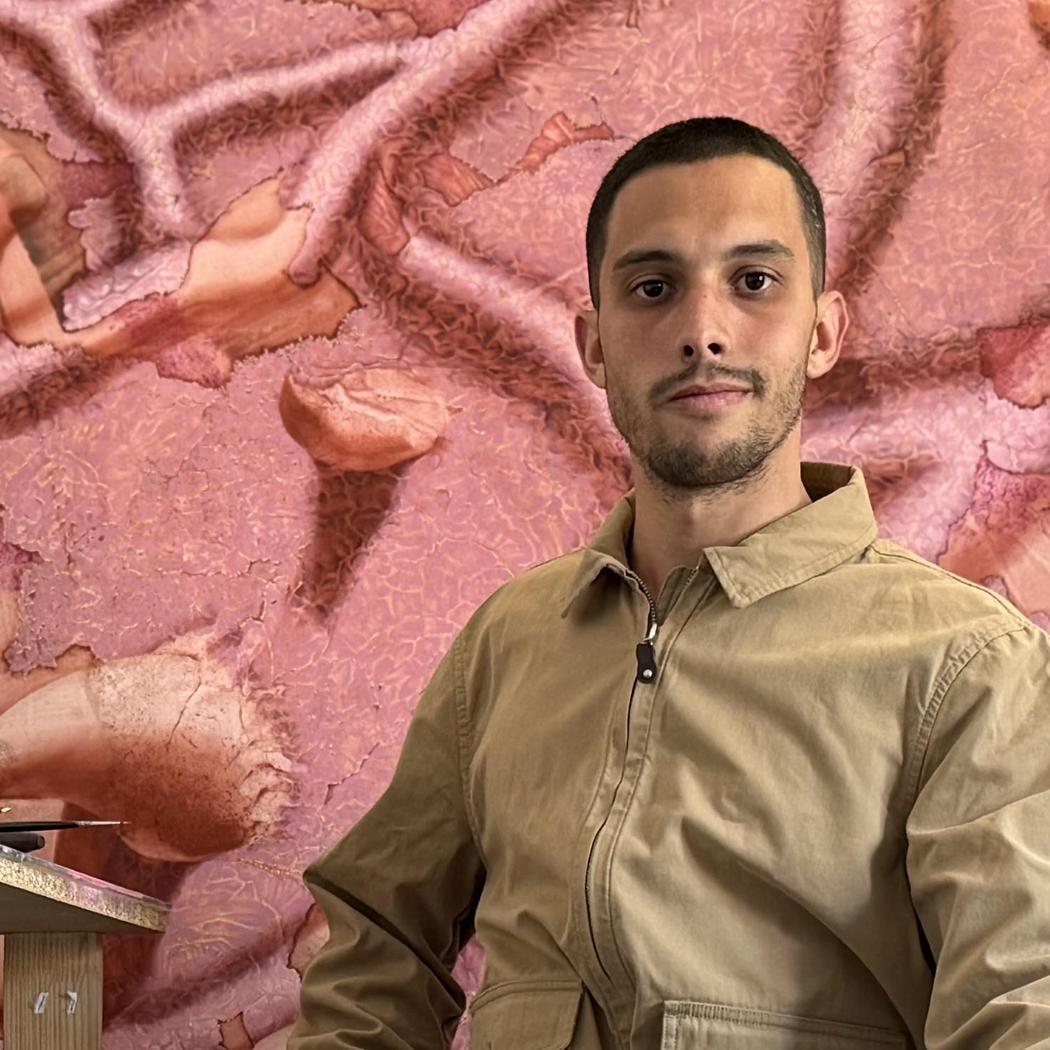
Leave a Reply
You must be logged in to post a comment.